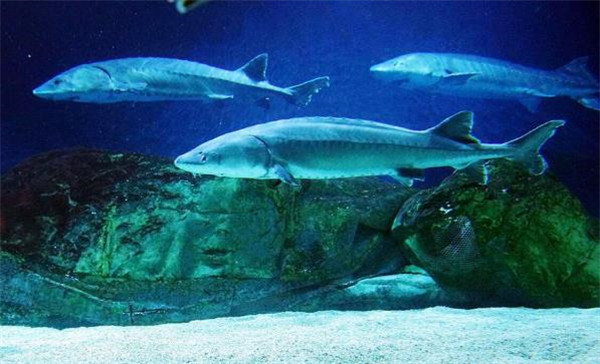Protect marine environment, protect Chinese sturgeon
 |
|
Chinese Sturgeon. [File Photo] |
For years, scientific researchers and organizations have focused Chinese sturgeon's protection mostly on Yangtze River, Chinese sturgeons' breeding route. The government and organizations have held release activity annually along the Yangtze River, and promoted a great deal of campaigns and programs which are limited to river areas. However, from my point of view, since Chinese sturgeon is a typical migrating fish between river and sea, we cannot ignore the vital role that marine environment plays in a Chinese sturgeon's life cycle. Unfortunately, the marine environment is also suffering from great pollution and destruction caused by human activities and on the other hand, the public concerns on such situation is yet to be enhanced. Evidently, we need to throw more light on the importance of marine condition to Chinese sturgeon and take more actions against ecological destruction in order to preserve Chinese sturgeon's habitat.
First of all, Chinese sturgeons spend more time of their lives in the ocean than they do in the river. As we know, although Chinese sturgeon is categorized into freshwater fish, it still lives in the sea for most of its lifetime and only returns to the river when it becomes sexually mature. The most long-lived Chinese sturgeon can live up to 40 years old yet it takes a long time to reach sexual maturity, usually about 10 years and female Chinese sturgeons go back to the river to lay eggs each 2-3 years. Thus, because of comparative longer living time in the ocean, Chinese sturgeon's survival rate is also closely bonded to the marine environment.
Secondly, Chinese sturgeon migrates between the river and sea, such nature enriches its destination on the river with precious substances from ocean, and in this way, ecological diversity of the river is promoted. However, oceanic substances brought by Chinese sturgeons to the Yangtze River will no longer be beneficial if the sea itself is contaminated. Therefore, protecting the Chinese sturgeons' habitat at the estuary is, in some way, keeping the ecosystem in Yangtze River intact.
In addition, Chinese sturgeons mostly forage in the ocean and they hardly eat anything when they are swimming back to the river. Therefore, the energy and nutrients required for the long period migration mainly depend on the fat and other substances they previously stored in their bodies before the migration starts. Consequently, the quality of food resources in marine environment becomes another concern of great significance.






















